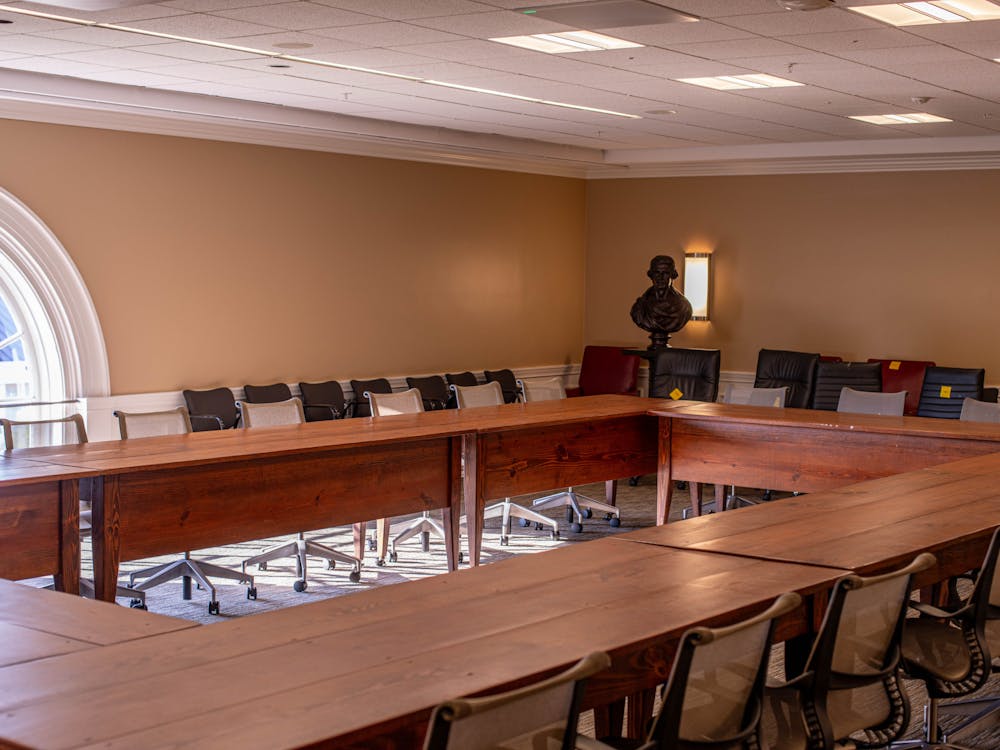Increased voter registration in the City of Charlottesville in anticipation of the upcoming presidential election has the city facing the possibility of having to redraw voter precincts. Under Virginia Code section 24.2-307, if more than 4,000 registered voters cast ballots during a presidential election, the local government is required to redraw precinct lines.
Charlottesville General Registrar Sheri Iachetta said the city has always seen high voter turnout during presidential elections. In 2004, she said, 78 percent of the city’s registered voters cast their vote in the presidential election. This year, with an estimated additional 6,000 registered voters, Iachetta predicted that Charlottesville will see a voter turnout near 80 percent. While citizens only have 13 more days to register to vote in the commonwealth of Virginia, three precincts in Charlottesville are likely to surpass the 4,000-voter limit in the upcoming November election, Iachetta said, noting that the city’s precincts “have all grown exponentially” in recent months. As of yesterday, the precincts of Recreation, Venable and Jefferson have 4,456, 4,571, and 4,655 registered voters, respectively. If 80 percent of these registered voters show up on Election Day, each precinct would be only a few hundred voters shy of the 4,000 voter limit.
“I think people are really excited about the ticket, the entire ticket,” Iachetta said, adding that voters continue to register even as Election Day nears. “We’re so overwhelmed, but it’s so exciting.”
Should a city precinct see more than 4,000 voters Nov. 4, the city will have to redraw that precinct by February, Iachetta said. Jackie Harris, a consultant to the Virginia State Board of Elections, said redrawing the city’s districts could be a difficult process. When redrawing districts, she said, officials use census data and carefully analyze the communities and voting blocks within each precinct. The community also plays an important role in the process, Harris said, because the city “passes the precinct by ordinance and holds public meetings and includes community representatives in order to make sure the plan is good for [Charlottesville] City Council.”
Harris noted that such a drawn-out process takes time, which could pose yet another obstacle for Council should Charlottesville be required to redraw its voting precincts. Because of a recent Virginia law that prohibits the redistribution of precincts between Feb. 1, 2009 and May 15, 2011, in response to the upcoming census, Harris said, it would seem that Charlottesville officials will have about 90 days following the November election to redraw precincts in which more than 4,000 voters turn out in November. However, the Voting Rights Act of 1965 requires all voting district plans to be reviewed by the Department of Justice in order to ensure precincts are non-partisan, according to Harris, and that means the city could have far less time than the 90 days until February to redraw its voting precincts. The Department of Justice has up to 60 days to review the new plans and to decide if an objection should be made under the 1965 Act, so city officials could have less than a month to redraw and submit their precinct plans should changes be required, he said.
Harris said drawing up new, non-partisan precincts would be difficult to do in 30 days or less, but noted that they only other option available to the city should more than 4,000 voters turn out in any of the precincts would be to wait until 2011. He said the city could redraw its precincts following this extended freeze period.
Iachetta said the precinct issue is not a new one in the city. Although by law the general registrar is only required to notify Council when the number of registered voters in a precinct approaches 5,000, the city has been exploring the possibility of redrawing precincts for the past couple years, she said, and continues to do so.






